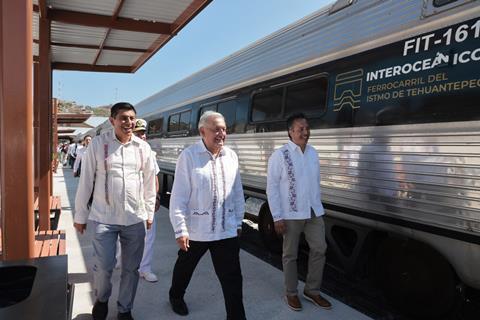
MEXICO: President Andrés Manuel López Obrador inaugurated what is termed ‘Line Z’ of the Interoceanic Railway of the Isthmus of Tehuantepec on December 22.
The 309 km route connects Coatzacoalcos on the Gulf of Mexico with Salina Cruz on the Pacific seaboard. It forms part of a wider three-line network totalling 1 087 km, which the national government hopes to renovate and commission in stages by mid-2024.
After decades of neglect, the mostly single-track Line Z, which crosses a mountain range in the south of the country, has been rebuilt over the past three years.
While the railway is expected to handle both freight and passenger traffic, the project aims to revive the historic Interoceanic Corridor, which was first developed in 1907 to transport goods from the Pacific Ocean to the USA’s east coast. At its peak, around 60 trains per day used the corridor, fostering the development of Salina Cruz and Coatzacoalcos. Traffic on the corridor started to decline after the opening of the Panama Canal in 1914.
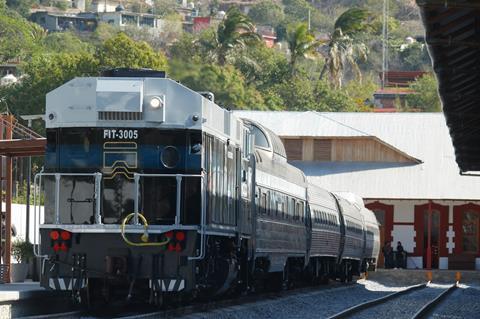
The ports in both cities, the railway and related terminal infrastructure are all managed by Ferrocarril del Istmo de Tehuantepec, a state-owned enterprise which is part of the Mexican Navy.
On November 10 last year, naval forces temporarily occupied part of the railway alignment, which was being run under a concession by Ferrosur, a subsidiary of Grupo México. This dispute was resolved when the government and Grupo México agreed the transfer of 127 km of lines to the Navy. The routes affected are El Chapo – Coatzacoalcos, Coatzacoalcos – Medias Aquas, and Hibueras – Minatitlan.
In return, the government granted an free eight-year extension of Ferrosur’s concession for the railway linking the Isthmus of Tehuantepec to the port of Veracruz.
Later stages
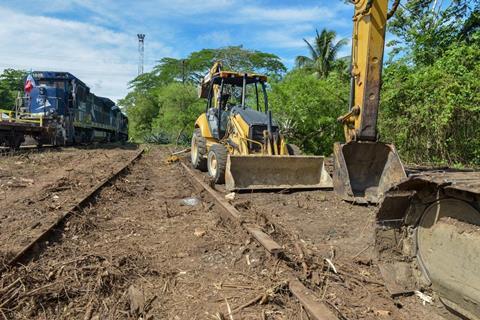
The remaining elements of the Trans-Isthmus Railway project cover the rehabilitation of two other railway lines and the modernisation of four ports.
The 328 km Line FA links Coatzacoalcos to Palenque, and it is due to be inaugurated in March; this will be followed by the 450 km Line K is to link Ixtepec on Line Z with Ciudad Hidalgo on the Guatemalan border. Operations are due to start on this route in July 2024.
Freight services

The primary aim of the reconstruction of the Trans-Isthmus Railway is to develop freight traffic through the two ports; investment in the Minatitlán and Salina Cruz oil refineries is also expected to generate more rail flows.
The government hopes to attract private investment by establishing industrial parks in the Isthmus. The plan is to accommodate up to 1·2 million containers per year, with the railway offering a cheaper and faster transport option to the Panama Canal.
Passenger trains
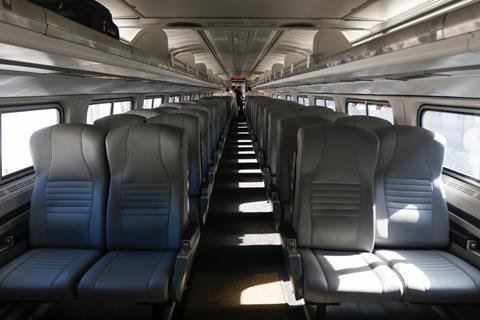
Currently, one passenger train a day is running on Line Z, departing every other day at 7.00 from each terminus and arriving at 14.00 after a 7 h journey. If demand increases, the number of trains per day may be increased. The fare for the full journey from January 1 is 304 pesos following an introductory discount of 50% offered at the end of December.
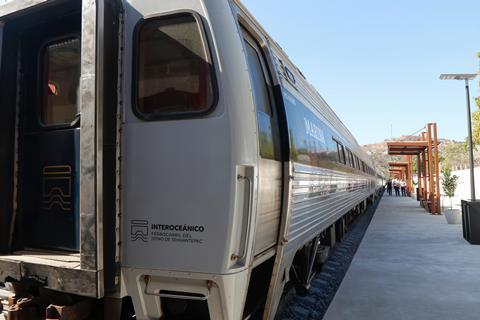
A variety of rolling stock will be deployed as FIT is currently renovating its vehicle fleet. The operator has three second-hand ex-British Rail IC125 High Speed Train diesel power cars and 11 MkIII coaches, augmented by a number of ex-Union Pacific SD70M diesel locomotives and coaches. Two second-hand tram-train vehicles have also been acquired that were previously used on a now-moribund tourist service in Puebla.
- Following the inauguration of the 473 km Cancún – Campeche section of the Tren Maya project on December 15, January 1 saw the ‘pre-opening’ of the 226 km southwestern section from Campeche to Palenque. The Tren Maya network is now 699 km long, and the remaining sections from Escárcega to Cancún are planned to open in the first quarter of this year. These would take the overall length to 1 525 km.


















